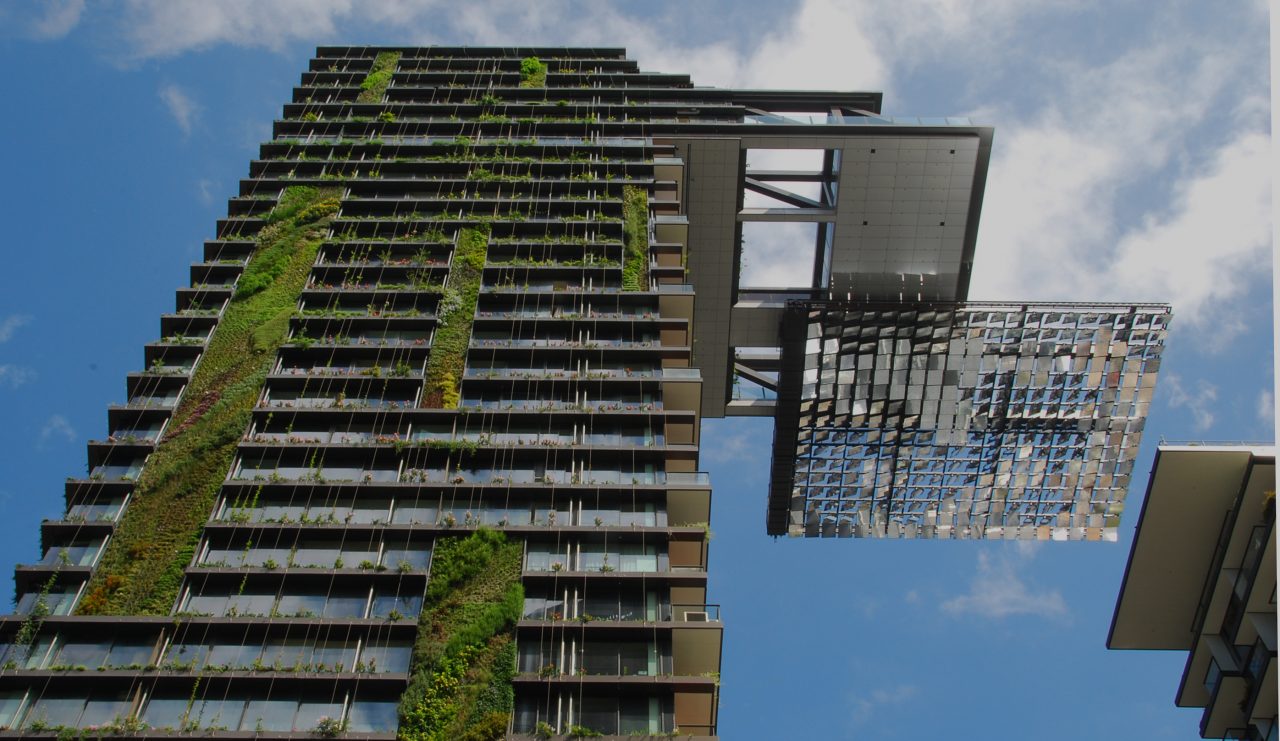According to a recent report, soon to be released by Dodge Data & Analytics,
Green building continues to double every three years, with strongest acceleration in emerging economies, and clients and tenants worldwide are increasingly demanding sustainability – for both energy efficiency and occupant benefit.
Preliminary results from the World Green Building Trends 2016 report, with funding from United Technologies, were announced by Bob McDonough, President, UTC Climate, Controls & Security at the 2015 Green build International Summit in Washington, DC earlier this month.
The new report surveyed more than 1,000 architects, engineers, contractors, owners, specialists and consultants in 69 countries to understand their current green building project involvement and expectations for 2018. In addition to expanding the sample size by more than 25 percentover the 2012 study, the new report also has a higher percentage of architect and contractor participation across a larger number of countries.
The findings, which will be fully available in early 2016, reaffirm 2008 and 2012 research thatgreen building is doubling every three years and introduce new trends, the latest drivers and barriers for green building.
Green Building Trends
Across all regions studied, respondents increasingly projected that more than 60 percent of their projects would be green projects by 2018, with a doubling from current projects across the Middle East, North Africa, Asia, South America and Sub-Saharan Africa. The largest percentage of green building activity continues to be in the commercial building segment, comprising 46 percent of respondents’ future green building projects.
Activity in institutional buildings – schools, hospitals and public buildings – is expected to surpass green building projects in existing buildings (38 and 37percent respectively) by 2018.
Green Building Drivers
Forty percent of respondents noted client demands as a driver for green building activity, followed by environmental regulations (35 percent). Both categories increased over 2008 and 2012 responses.
An enhanced awareness of the occupant and tenant benefits of green buildings emerged in the 2016 report, with healthier neighborhoods (15 percent), higher return on investment (11 percent), and employee recruitment (5 percent) increasing as drivers. Regarding social motivators, respondents ranked encouraging sustainable business practices as the most important benefit of green building (68 percent), followed by its ability to support the domestic economy, create a sense of community and increase worker productivity (all 50 percent or higher). From an environmental perspective, reducing energy consumption (84 percent) and reducing water consumption (76 percent) topped the list as important.
“These results reinforce what those in the green building industry already know – green buildings are better for the environment, better for business and better for the people within them,” said John Mandyck, UTC Chief Sustainability Officer. “Green building activity continues to accelerate, with growing awareness of occupant and tenant benefits, speaking to the fact that the real, tangible benefits of green buildings are becoming more widely recognized.”
The survey also examined potential barriers to green building development. Among the findings, half of survey respondents noted higher perceived costs as the top barrier to green building, a notable decline from 80 percent of respondents in 2008 and 76 percent in 2012. Other barriers differ by country. Developing countries regard lack of public awareness and lack of political support as a key barrier, while in the U.K., the perception that green is for high-end projects only was cited.
“There is some work to do, but this data shows the benefits of green buildings are real. Roughly 70 percent of survey respondents cite lower operating costs as the greatest benefit – and these results provide a roadmap to continue growing this important segment,” added McDonough. “It becomes a cycle as building owners seek to create healthy, energy-efficient and productive environments – as a selling point to tenants.”
